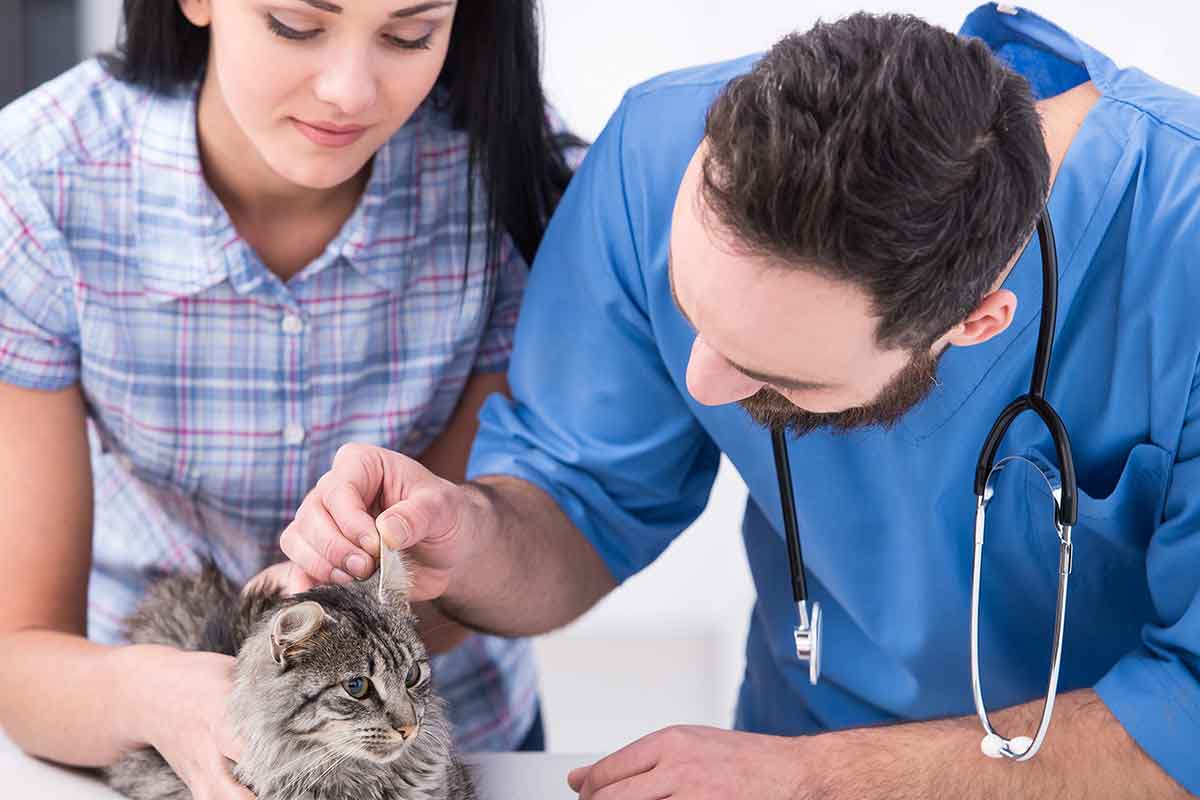We recognize that veterinarians make positive differences in the lives of our cats and dogs. But veterinary practices couldn’t function as efficiently or effectively without the expertise of compassionate veterinary technicians. To recognize their contributions, the third week of October each year celebrates National Veterinary Technician Week.
In another life, I worked as a vet tech. I’ve known many “animal nurses” and veterinary assistants over the years and witnessed the positive impact made by a kind word, gentle suggestion, and simply listening to owner concerns.
Veterinary technician professionals work hand-in-paw with the veterinarian and pet parents. In a Fear Free hospital, they help ensure cats and dogs have the best possible experience before, during and after the veterinary visit. Here are some ways a vet tech/pet owner partnership helps transform the shy cat or fearful dog into wagging, purring patients.
Before The Vet Visit
Owners:
- You know your pet best. Make a list of potential issues such as pet carrier distress, car sickness issues, or a history of fear biting. Share these with veterinary team before the visit.
- Tell the tech about your pet’s favorite comfort object, treat, or “happy” word.
- Practice handling tips, if recommended by the vet tech and safe to do so. For instance, briefly touch your dog’s paw or ear, then follow the touch with a small special treat. Associate the cat carrier with catnip, a special treat, or a favorite toy.
- Bring samples as requested. That bag of poop means the vet tech won’t need to collect a sample. Your pet will be greatly relieved!
Veterinary Technicians:
- Consult owners to learn their concerns. Offer recommendations such as best crates, travel tips, what to feed (or not feed) prior to the visit.
- Under the guidance of a veterinarian, discuss whether pre-visit stress-reducing meds might be an option.
- Note helpful pet foibles: that Fritz’s bear toy from home helps him relax, Tiger loves Philly cream cheese, and King’s ball addiction keeps him focused.
- Suggest “fun vet visits” for the pets that only involve fun things like petting and treats from the vet tech and staff. I’ve been doing this with my Bravo-Pup once a month, for him to be weighed. He gets treats, the vet techs and staff handle him and praise him, and Bravo loves the visit.
During The Visit
Owners:
- Bring your pet’s favorite blanket, toy, and/or treat for familiarity.
- Remind the veterinary technician of any old or new concerns.
- Breathe! Your nerves may increase your pet’s nerves, so trust yourself and the vet tech. You’ve prepared for this.
- Ask questions. Your vet tech will answer or be sure the veterinarian provides explanations. It’s important that you understand everything that’s done for your cat or dog. If you don’t understand, say so!
Veterinary Technicians:
- Describe exactly what to expect before performing each procedure. Your soothing voice not only calms the pet, it sends a message to the owner that you care.
- If safe and appropriate to do so, ask the owner to engage the pet with the toy, treat, or other happy-making distraction as you perform your duties. For instance, the owner could lure the dog onto the scale with his favorite squeaky or encourage him to lick up squeeze-cheese spread on the table while you get his vital signs. This is a partnership—and owners (and pets) feel more willing to comply when they are part of the process.
- Confirm with owners that they understand veterinary recommendations. Offer further explanations, if needed, and tips to help owners comply. Perhaps provide a treatment demo, with a favorite treat.
- Explain what to expect, and how long the behavior change (or other issue) might last. Some cats hide under the bed after a vet visit, or the other feline friends react to “stranger danger” vet-visit smells when Tiger returns. Provide tips on how to make reintegration into the home a good experience. Encourage owners to call you to report back on how the pet adjusts.
After The Visit
Owners:
- Be alert to any behavior or health cautions the vet tech and/or veterinarian mentioned. Follow the suggestions for relieving any issues.
- Call the vet tech if something seems unusual or wrong. Remember, you know your pet best, and vet techs don’t have a crystal ball.
- Tell veterinary technicians how much they helped with the vet visit process. They care deeply about your experience and your pets. If you have suggestions to improve the process, please share.
Vet Techs:
- Call the owner and ask about the pet’s progress. That goes a long way toward demonstrating the care you feel for pet parents and their cats and dogs.
- Pets aren’t the only ones who feel stress and fear in the vet clinic. A scary diagnosis or treatment, or just a stressful visit, can make it hard for owners to hear, understand, or remember. Be prepared for repeated calls from pet parents, who often simply want your understanding and encouragement.
- Congratulate the pet parent for making progress with the cat or dog. Explain that accepting new situations and people takes some pets longer than others, and it can be a slow process. But together you can do this, one paw-step at a time.
This article was reviewed/edited by board-certified veterinary behaviorist Dr. Kenneth Martin and/or veterinary technician specialist in behavior Debbie Martin, LVT.








